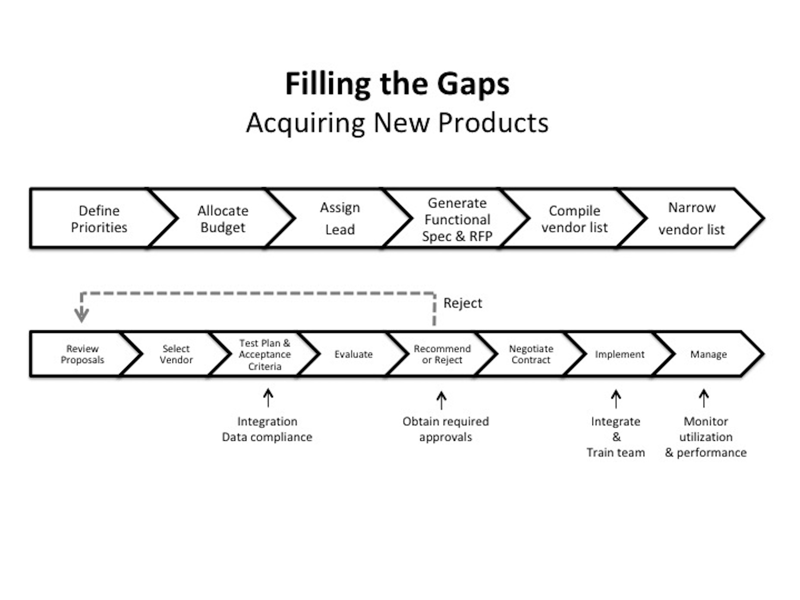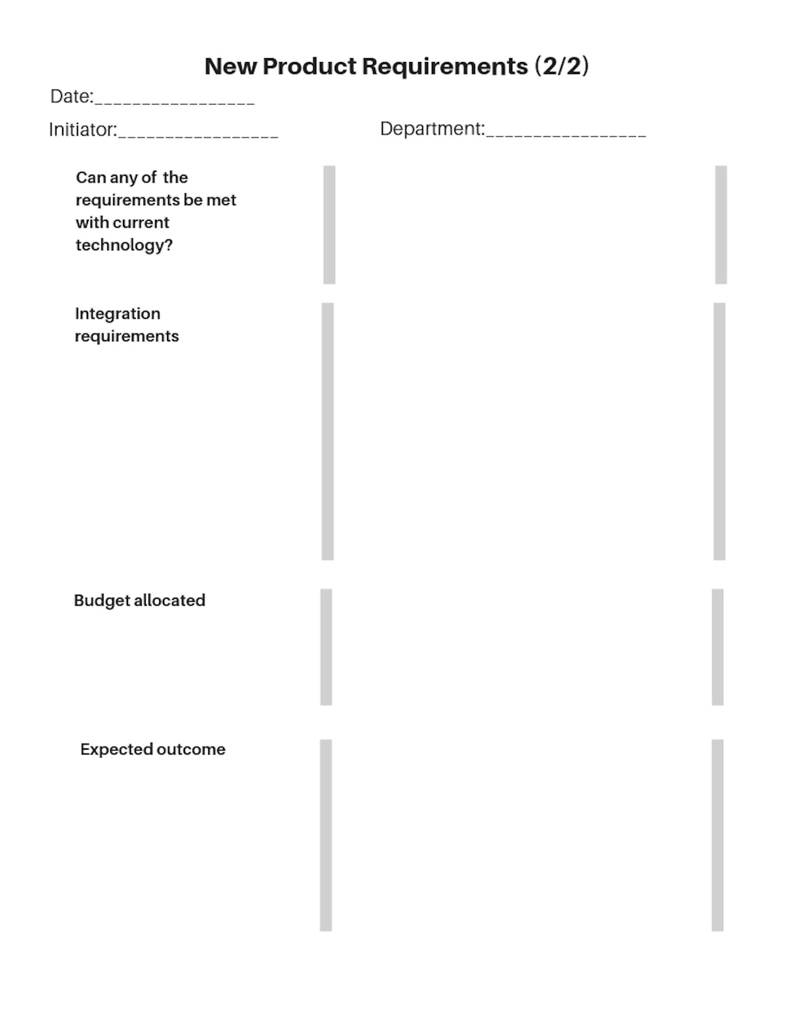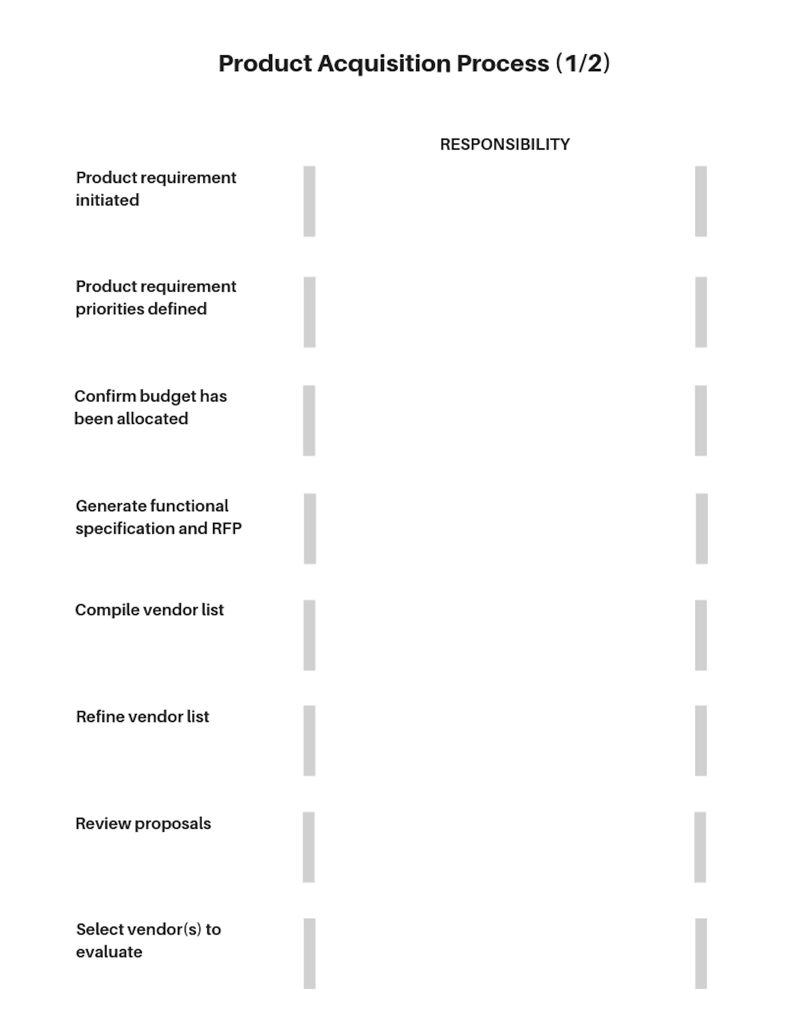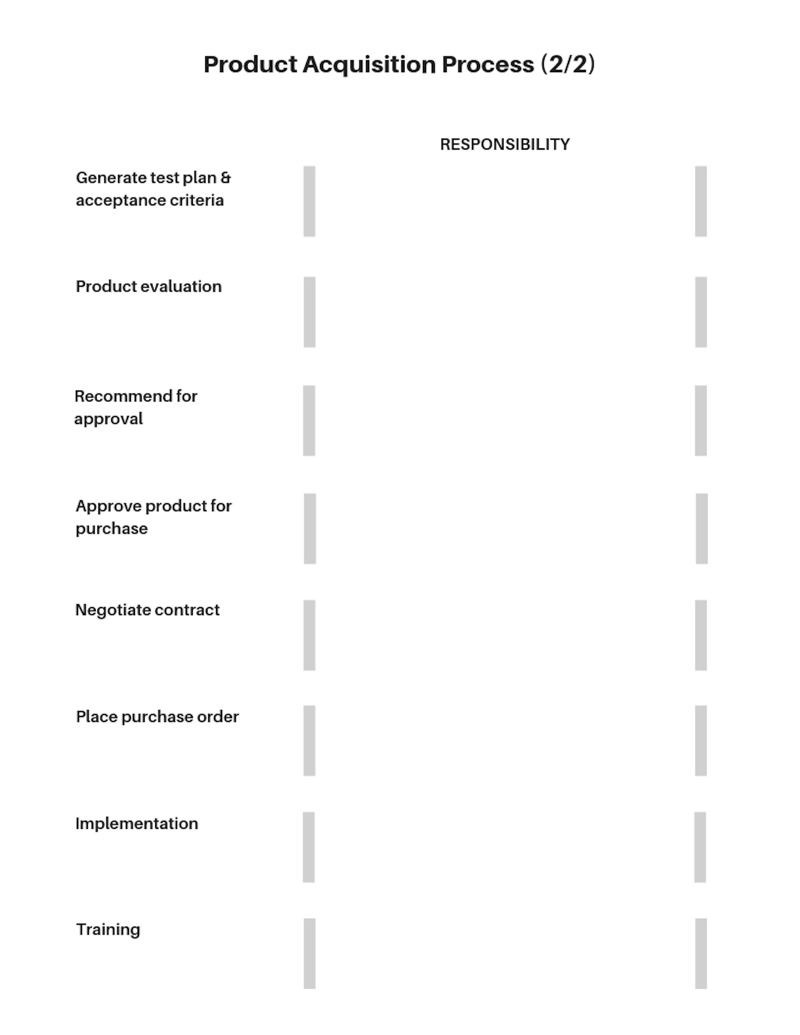With a clean stack in hand, you are now ready to fill in the blank spaces.
In the same way it is important to have a process for constructing, auditing, and rationalizing your marketing stack, it is important to have a process for adding new products to the stack. Without a well-defined process, you run the risk of wasting time as multiple departments evaluate the same product, or as one team evaluates and qualifies a product, only to see their purchasing process stalled because another team identifies the need for something similar and wants to have their specific requirements incorporated into the work the initial team is doing.
A note: Increasingly, we are seeing companies consider Build vs. Buy when it comes to new marketing technology. This is either because they can’t find a tool to meet their requirements, commercially available tools are too expensive, or more commonly because they perceive that they can achieve a competitive advantage by building their own platform.
While each company needs to define a process that aligns with their own business operations, there are some best practices to consider:




